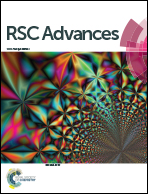The effect of DBP of carbon black on the dynamic self-assembly in a polymer melt
Abstract
The dynamic percolation behavior of conductive fillers in conductive polymer composites (CPCs) has drawn wide interest due to its crucial influence on the final properties. It is thought that the viscosity of the neat polymer, filler–polymer interaction and entanglement in the filler network are crucial issues. Meanwhile, the structure and related characteristics of the filler is an important parameter for determining filler properties and various functionalities. However, their influence on the filler dynamic self-assembly process in a polymer matrix has been barely investigated. Herein, three types of carbon black (CB) with different dibutyl phthalate (DBP) absorption have been used to study the electrical percolation behavior in thermoplastic polyurethane with methods including in situ electrical measurement during isothermal annealing, scanning electron microscopy (SEM), and rheological study as well as theoretical analysis. It is observed that a higher DBP value leads to a lower percolation threshold. During dynamic percolation, the activation energy increases almost linearly with DBP absorption. It is thought that the more stable pre-formed conductive networks for CB with more DBP are responsible. Thus, the driving force for the self-assembly process is lower for CB with more DBP. This study provides new insight for the dynamic self-assembly process of a functional filler in a polymer matrix.


 Please wait while we load your content...
Please wait while we load your content...